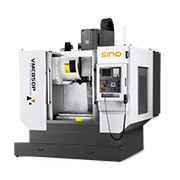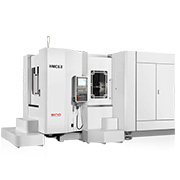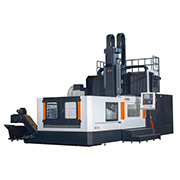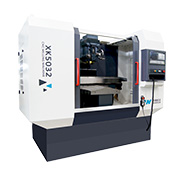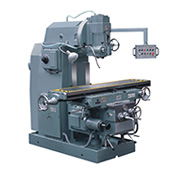How to deal with these problems during CNC machining ?
How to deal with these problems during CNC machining ?

1. Workpiece overcut
Reason:
1. Bouncing of tool, the strength of the tool is not enough or the tool is too long or too small, making the tool to bounce.
2. Improper operation by the operator.
3. The cutting allowance is uneven. (For example: leave 0.5 on the side of the curved surface and 0.15 on the bottom)
4. Improper cutting parameters (such as: tolerance is too large, SF setting is too fast, etc.).
Tips to improve:
1. The principle of tool using: If tool can be big, use big tool; If tool can be short, use short tool.
2. Add a corner cleaning program, and the margin should be kept as uniform as possible (the side and bottom margins should be the same).
3. Reasonably adjust the cutting parameters, and round the corners with large allowance.
4. Using the SF function of the machine tool, the operator can fine-tune the speed to achieve the best cutting effect.
2. Problem of dividing
Reason:
1. The operator is inaccurate in manual operation.
2. There are burrs around the mold.
3. The center rod is magnetic.
4. The four sides of the mold are not vertical.
Tips to improve:
1. Manual operation should be carefully checked repeatedly, and the points should be at the same point and the same height as far as possible.
2. Use a whetstone or a file to deburr around the mold, wipe it with a rag, and finally confirm it with your hands.
3. Demagnetize the center rod before centering the mold (the center rod can be divided into ceramic or others).
4. Check whether the four sides of the mold are vertical (if the verticality error is large, you need to review the plan with the fitter).
3. Problem of tool setting
Reason:
1. The operator is inaccurate in manual operation.
2. The tool is clamped incorrectly.
3. The blade on the fly cutting is wrong (the flying tool itself has a certain error).
4. There is an error between the R tool and the flat bottom tool and the fly cutting.
Tips to improve:
1. Manual operation should be carefully checked repeatedly, and the tool should be set at the same point as much as possible.
2. When the tool is clamped, blow it with an air gun or wipe it with a rag.
3. One blade can be used when the blade on the fly cutting needs to measure the shank, and the bottom surface is smooth.
4. A separate tool setting program can avoid the error between the R tool and the flat tool and the fly cutting.
4. Collider-Programming
Reason:
1. The safety height is not enough or not set (the tool or chuck hits the workpiece during rapid feed G00).
2. The tool on the program sheet and the actual program tool are wrongly written.
3. The tool length (blade length) and the actual machining depth on the program sheet are wrongly written.
4. The depth Z-axis fetching and the actual Z-axis fetching on the program sheet are wrongly written.
5. The coordinate setting is wrong during programming.
Tips to improve:
1. Accurate measurement of the height of the workpiece also ensures that the safety height is above the workpiece.
2. The tool on the program list should be consistent with the actual program tool (try to use the automatic program list or use the picture to output the program list).
3. Measure the depth actually processed on the workpiece, and write the length of the tool and the length of the blade on the program sheet (generally, the length of the tool holder is 2~3mm higher than the workpiece, and the length of the blade is 0.5~1.0mm).
4. Take the actual number of Z-axis on the workpiece and write it clearly on the program sheet (this operation is generally written manually and needs to be checked repeatedly).
5. Collision-Operator
Reason:
1. Depth Z axis tool setting error.
2. The number of touches and operands are wrong in the score (for example, there is no cutting radius when taking the number on one side, etc.).
3. Use the wrong tool (for example: D4 knife is processed with D10 knife).
4. The program goes wrong (eg: A7.NC goes to A9.NC).
5. The handwheel is turned in the wrong direction during manual operation.
6. Press the wrong direction during manual rapid feed (for example: -X press X).
Tips to improve:
1. The depth Z-axis tool setting must pay attention to the position of the tool setting (bottom surface, top surface, analysis surface, etc.).
2. Repeated checks should be made after the number of hits and the operands are completed.
3. When clamping the tool, it should be checked with the program sheet and the program repeatedly before installing it.
4. The program should go one by one in order.
5. When using manual operation, the operator should strengthen the operating proficiency of the machine tool.
6. When manually moving quickly, you can first raise the Z axis to the workpiece to move.
6. Surface Accuracy
Reason:
1. The cutting parameters are unreasonable, and the surface of the workpiece is rough.
2. The cutting edge of the tool is not sharp.
3. The tool clamping is too long, and the blade avoidance is too long.
4. Chip removal, air blowing, and oil flushing are not good.
5. Program the cutting method (you can consider down milling as much as possible).
6. The workpiece has burrs.
Tips to improve:
1. The cutting parameters, tolerances, allowances and speed feed settings should be reasonable.
2. The tool requires the operator to check and replace it from time to time.
3. When clamping the tool, the operator is required to clamp as short as possible, and the blade should not be too long to avoid the air.
4. For the lower cutting of flat tool, R tool and round nose tool, the speed and feed setting should be reasonable.
5. The workpiece has burrs: it is directly related to our machine tools, cutting tools and cutting methods. Therefore, we need to understand the performance of the machine tool and make up for the edge with burrs.

